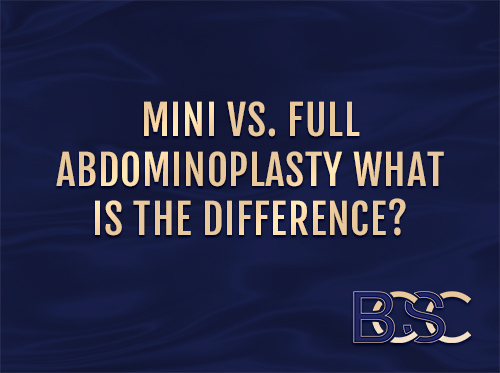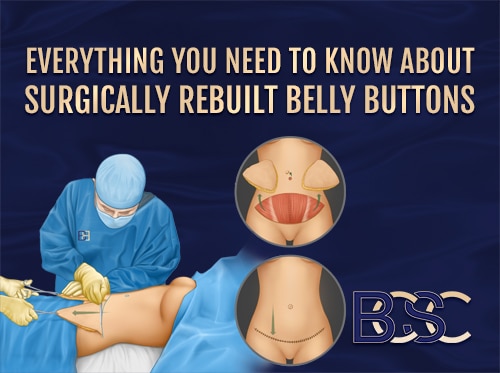Revision Abdominoplasty (Tummy Tuck) Surgery in Australia
Most patients are ** with the results of their primary abdominoplasty (tummy tuck). For patients who feel dissatisfied or experience complications, revision surgery is a potential remedy. Just like the initial abdominoplasty surgery, revision abdominoplasty, also known as secondary abdominoplasty, involves removing excess abdominal skin and repairing separated abdominal muscles.

Abdominoplasty revision
The main aim of revision abdominoplasty (tummy tuck) is to correct complications resulting from the primary procedure. However, revision abdominoplasty can be challenging, posing additional risks than the primary procedure. Therefore, patients should be aware of the process, potential risks, and recovery before considering revision abdominoplasty.
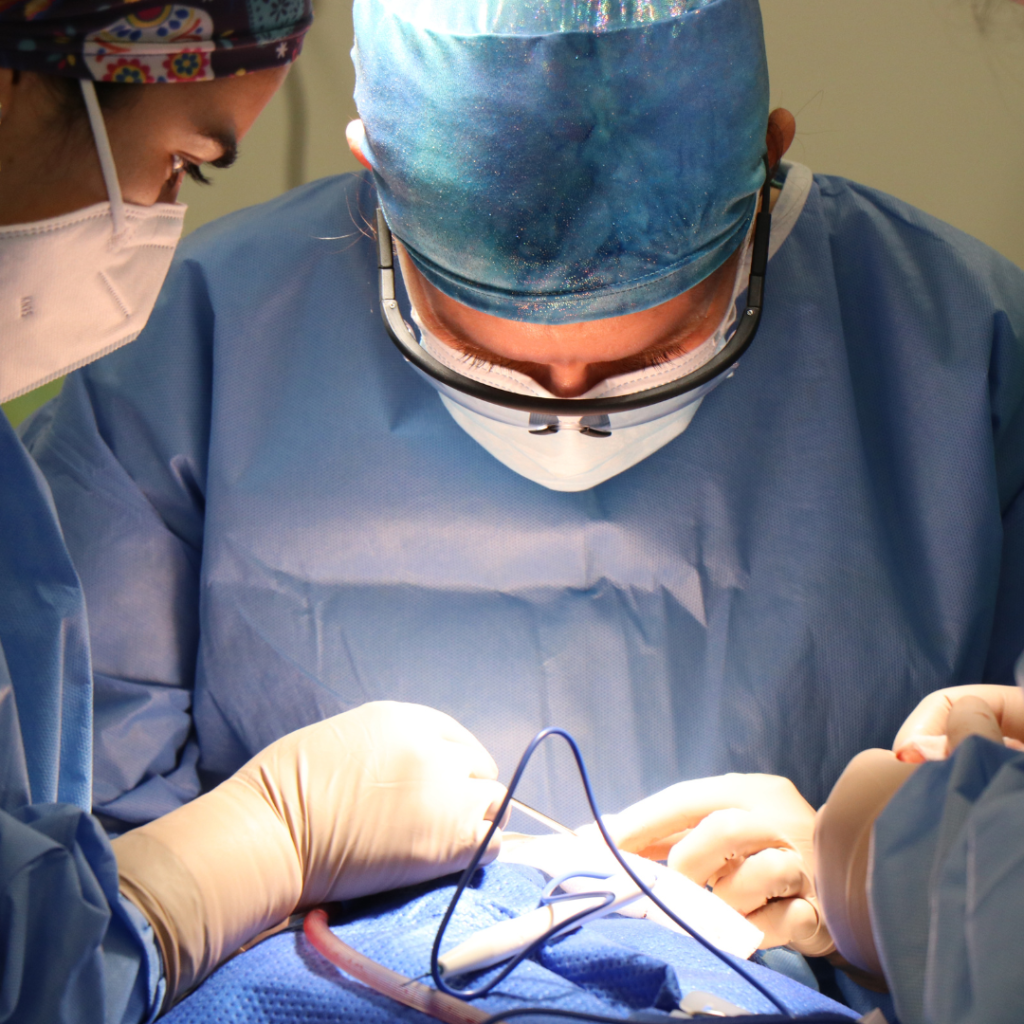
Separated abdominal muscles
What is Revision Abdominoplasty Surgery?
Revision abdominoplasty is a follow-up abdominoplasty procedure that follows the initial procedure **complications and side effects, corrects unsatisfactory results, or ** positive results.
Similar to the initial abdominoplasty procedure, the surgeon removes excess abdominal fat and skin, repositions the umbilicus, and corrects diastasis recti where applicable.
Despite the urge to undergo revision abdominoplasty as soon as possible, patients should wait at least 3 months to one year after the initial procedure. This allows the body time to recover and the residual swelling to subside. After residual swelling subsides and the final results are visible, many patients discover they don’t require revision surgery after all. Residual swelling may take up to a year to disappear.
Due to the procedure’s complexity and to avoid the need for revision surgery, patients are advised to choose a qualified and experienced specialist surgeon (FRACS) to ensure that the surgery is performed correctly in the first place.
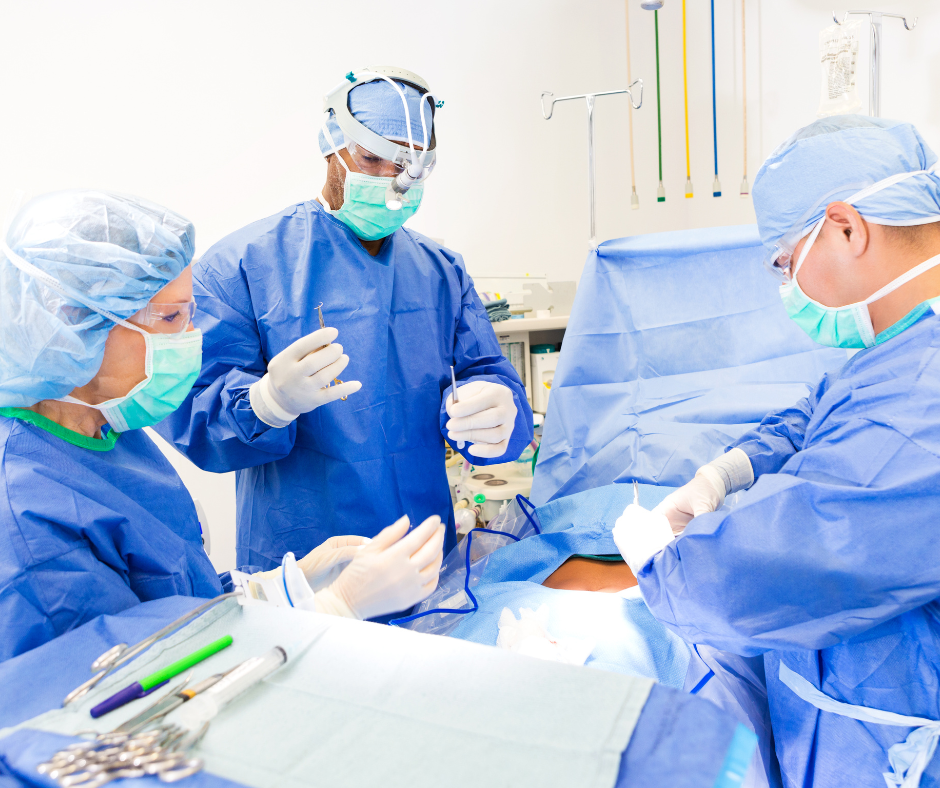
Challenges of Revision Abdominoplasty
Revision abdominoplasty poses challenges similar to the primary procedure. However, revision abdominoplasty has a higher risk of complications and a longer recovery. In addition, if you’re undergoing revision with a different surgeon, it’s hard for the surgeon to be sure how the previous surgeon performed the initial surgery, making it even more complex.
9 Reasons for Revision Abdominoplasty
Patients may undergo a revision tummy tuck in Australia for one or multiple reasons. A study on the rate of complications after an abdominoplasty notes that “Twenty-four per cent of patients underwent revision surgery. Most commonly further liposuction (12%), dog ear revision (10%) and scar revision (5%).”
The First Abdominoplasty Didn’t Include Liposuction
Abdominoplasty mainly removes excess abdominal skin. Therefore, if an abdominoplasty patient has excess fat, abdominoplasty may not adequately ** excess abdominal fat. Thus, the patient may not find the results appealing as expected. However, incorporating liposuction into the procedure will ensure that both excess fat and skin are removed.
Liposuction is a technique that gets rid of fat deposits through suction. A combination of abdominoplasty and liposuction, known as lipo-abdominoplasty, helps ** the results by combining the benefits of abdominoplasty and liposuction.
Dr. Beldholm uses VASER liposuction, an advanced liposuction that ensures effective fat removal to achieve the patient’s needs. VASER liposuction uses ultrasound waves to melt and liquefy fat for easier suction. The procedure also helps loosen the skin being removed and reduces bleeding. A study published by NIH shows that “Lipoabdominoplasty is one of the most commonly performed procedures in body-contouring surgery.”
Poor Cut/Incision in the First Abdominoplasty
The surgeon usually makes an abdominal incision to remove excess skin and fat and closes the incision after the procedure. The incision placement and scar appearance play a huge role in determining the final results of the procedure.
However, sometimes the incision may be wrongly placed, making it easily visible and hard to ** with the underwear. This can result from the surgeon’s inexperience, placing the incision too low, high, or wide.
In other instances, the incision may be correctly placed but heal poorly. This may result in thick raised scars, keloids, hypo and hyperpigmented scars, tethered scars, or hypertrophic scars spread past the incision site. Bad scarring results from various individual factors like age, overall health, and predisposition, and can therefore happen even with an experienced surgeon.
A study on scar prevention shows that “approximately 100 million people develop scars after trauma and elective surgery in middle-income countries every year. Furthermore, 15% of this population will require surgical intervention for their scars due to aesthetic considerations or functional impairment.”
Undergoing revision abdominoplasty will help correct a poorly placed incision or bad scarring. Patients should note that revision surgery can reduce the scar visibility but cannot remove them entirely. It’s advisable to undergo scar revision at least 6 months after the initial surgery.
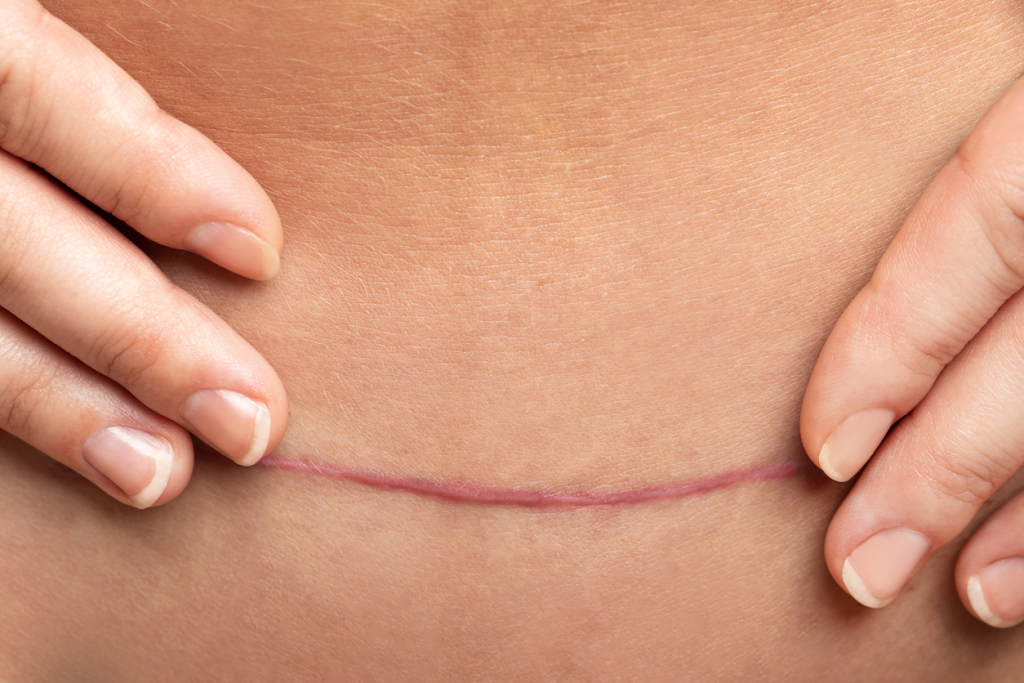
Abdominal scar
Muscle Separation (Diastasis Recti)
Separated abdominal muscles, diastasis recti, are common in post-weight loss patients and new mothers. Diastasis recti results from the increased distance between the midline and rectus abdominis muscles due to the weakening of the abdominal wall. Patients suffering from diastasis recti may notice a bulge in the abdominal wall and a feeling of a weakened abdomen. These symptoms worsen when pressure is applied to the abdomen.
Abdominoplasty patients may suffer from separated stomach muscles if the primary procedure did not ** the complication adequately or didn’t ** it at all.
Therefore, the patient will require a revision surgery to repair the separated abdominal muscles. A study on diastasis recti rehabilitation points out that the “treatment of diastasis recti is somewhat controversial and ranges from conservative management with lifestyle modifications and exercises to surgical repair with mesh recommendations.”
Skin Flaps Do Not Line Up
An abdominoplasty aims to ** the abdominal contour while ensuring results that ** as possible. However, the surgeon sometimes stitches the skin flaps unevenly, so they do not line up **. This will result in uneven abdominal contour, affecting the expected results.
Revision abdominoplasty will help correct and align the skin flaps. To ensure the skin flaps align **, most surgeons tilt the operating table during incision closure. This ensures the incision is stitched under slight tension, enhancing the results.
Another Pregnancy After Abdominoplasty Surgery
Women are advised to undergo an abdominoplasty after they are finished having children, but in some cases, women do become pregnant again after undergoing an abdominoplasty. The weight increase during pregnancy may cause a recurrence of loose abdominal fat and skin. In addition, it may cause muscle separation.
In such cases, a patient may choose to undergo revision abdominoplasty to eliminate the excess skin and fat and correct the resulting abdominal muscle separation.
Unstable Weight (Gaining and Losing)
An abdominoplasty patient should maintain a stable weight after the procedure. Gaining or losing significant amounts of weight will affect the abdominoplasty results. This results from the skin’s failure to retract normally after losing significant weight.
Revision abdominoplasty will help eliminate the excess skin resulting from weight fluctuations. However, patients should note that abdominoplasty is not a substitute for weight loss.
Belly Button Does Not Look Natural
Most abdominoplasty procedures involve the repositioning of the belly button. The procedure ensures that the belly button ** as possible. Though belly button anatomy varies from person-to-person,most have an oval shape and a tiny hood of skin at the top.
Sometimes, the belly button may appear unnatural after repositioning, since creating this ** requires a lot of expertise. An unnatural-looking umbilicus is a common factor in many patients undergoing revision abdominoplasty.

Ageing (Touching Up a Previously Done Abdominoplasty)
The skin loses elasticity with age due to low levels of elastin produced. Therefore, the skin becomes weak, thin, and loose as the patient ages. Therefore, if the patient had undergone an abdominoplasty in their ** years, they will notice the procedure’s results fade with age. The patient may, therefore, undergo a revision surgery to ** the results of the primary procedure.
** Results from a Mini Abdominoplasty
A mini abdominoplasty is less invasive than other abdominoplasty surgeries, requiring less downtime and cost.
After a while, however, some patients may find out they are not ** with the subtle ** of the procedure. In addition, they may have more loose skin and probably separated abdominal muscles. This will necessitate a revision procedure to ** the results.
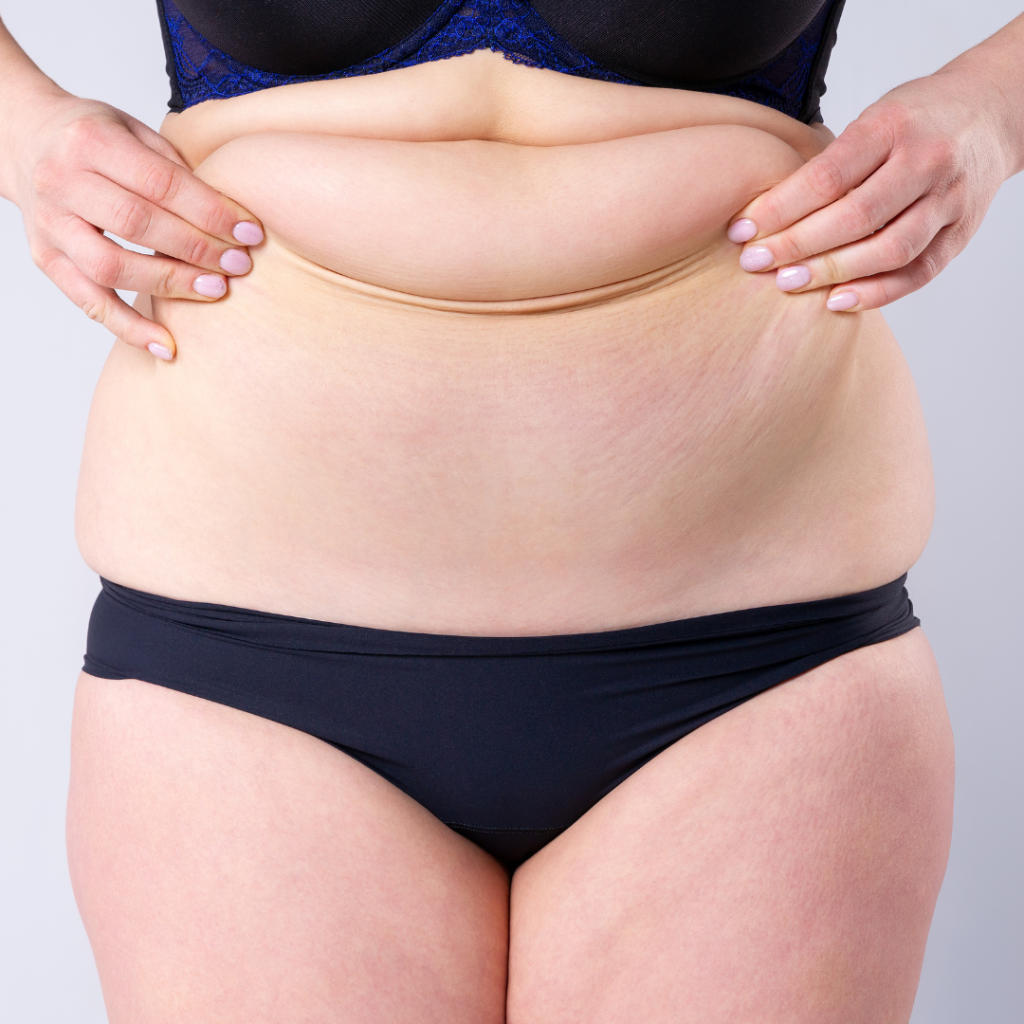
How Revision Abdominoplasty Differs from Traditional Abdominoplasty
Revision abdominoplasty aims to ** the results and treat any resulting complications from a traditional abdominoplasty. Therefore, revision surgery can be more invasive and complex and pose a higher risk of subsequent complications.
Revision abdominoplasty vs Traditional abdominoplasty | BCSC
Revision Abdominoplasty After Mini Abdominoplasty
A mini abdominoplasty only ** minimal loose skin in the lower abdomen. It doesn’t adequately ** significant loose skin and fat, the upper abdomen, belly button repositioning, or repair of separated muscles. Therefore, mini abdominoplasty patients may undergo a revision surgery to ** these issues.
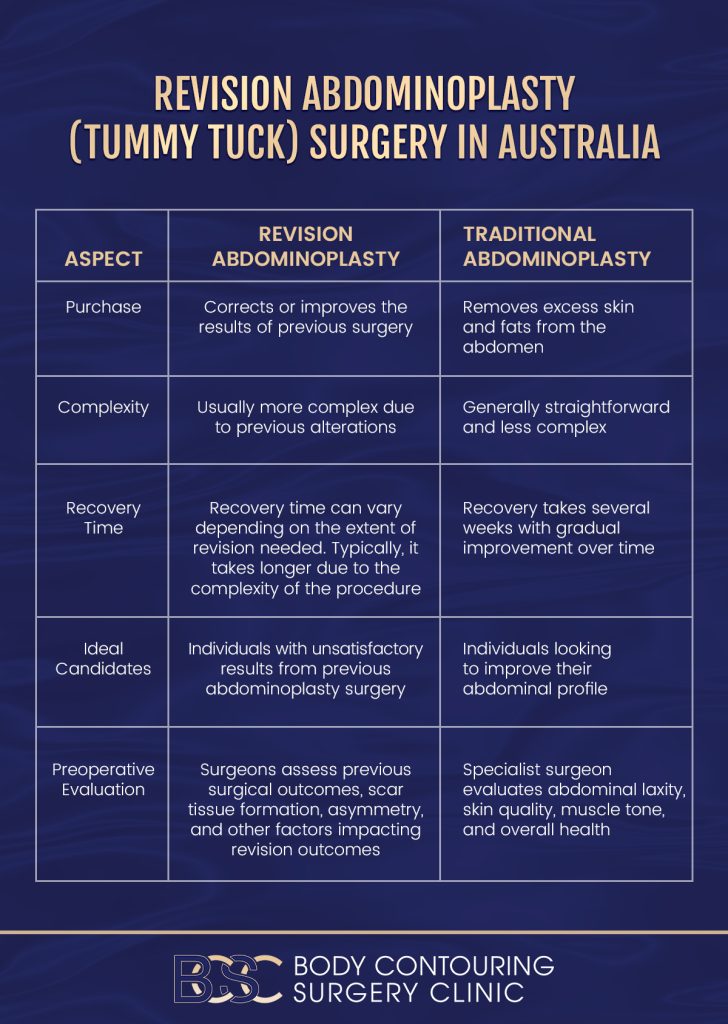
Revision abdominoplasty vs Traditional abdominoplasty | BCSC
Risks of Revision Abdominoplasty
Like any other surgical procedure, revision abdominoplasty poses several risks. It’s important for patients to be aware of these risks and discuss them with their specialist surgeon.
- Anesthetic risk: Revision abdominoplasty is an invasive procedure; therefore, the patient will be placed under anesthesia. This may have side effects like allergic reactions and hypersensitivity.
- Excess scarring: After surgery, incisions heal and become scars. Sometimes, however, abnormal scarring may develop.
- Excess Bleeding: Bleeding is normal after surgery, but excess bleeding is a cause for alarm.
- Seroma: This is a complication where excess fluid accumulates at the surgical site. Most surgeons use surgical drains to remove excess fluid after surgery.
- Wound infections: The incision site forms a wound that will take time to heal. However, the patient should be concerned if they experience soreness, severe pain, discharge, or fever.
- Loss of Skin Sensation: The patient may temporarily lose sensation around the surgical area. Sometimes, the loss of sensation may be permanent.
- Blood clots (Deep Vein Thrombosis): This is a rare complication where the patient swells in the calf due to long bed rest. Blood clots can be fatal.

Recovery period after a tummy tuck
Recovery and Downtime Following Abdominoplasty
After the procedure, the surgeon bandages the incisions and places a compression garment on the surgical site. The patient should wear compression garments for six weeks to reduce swelling and ** recovery. Occasionally, the surgeon may place surgical drains to help remove excess fluid from the wound.
The doctor will prescribe pain medication to relieve the pain and antibiotics to minimise the risk of wound infection. During recovery, the patient should avoid exercises and strenuous activities for at least six weeks. However, most patients can resume light chores after 2-3 weeks.
Patients should also follow the post-operative care routine prescribed by the doctor and attend follow-up sessions. It’s important to understand that recovery from revision abdominoplasty depends on several factors:
- Overall patient’s health
- Age
- Post-operative care
- Invasiveness of the revision procedure

Abdominal scar
What Will My Scar Look Like? Will the Same Incision Be Used?
During revision, the surgeon may use the original scar or create a new incision, depending on the extent of revision. This will also determine how the scar looks.
Importance of Finding a Surgeon Experienced in Revision Abdominoplasty
The surgeon plays a huge role in the final results of an abdominoplasty procedure. Therefore, finding an experienced surgeon for your revision procedure minimises risk and ensures a positive outcome.
Where to Find a Surgeon Experienced with Revision Abdominoplasty in Australia
If you’re looking for an experienced revision abdominoplasty surgeon in Australia, contact Dr. Bernard Beldholm, MBBS B.Sc (Med), FRACS, founder and CEO of Body Contouring Surgery Clinic. Dr. Beldholm is a specialist general surgeon who has performed revision abdominoplasty procedures for more than 14 Years.

Conclusion
Patients dissatisfied with the results of their primary abdominoplasty procedure may undergo a revision surgery. The procedure helps ** the results and correct complications from the primary procedure. However, patients should note that revision abdominoplasty is more complex than the primary procedure and should, therefore do everything suggested to minimise the need for revision.
References
- Stewart, K. J., Stewart, D., Coghlan, B., Harrison, D. H., Jones, B. M., & Waterhouse, N. (2006). Complications of 278 consecutive abdominoplasties. Journal of Plastic, Reconstructive & Aesthetic Surgery, 59(11), 1152–1155.
- Cárdenas-Camarena, L., Reyes-Herrera, M. F., Vargas-Flores, E., López-Fabila, D. A., & Robles-Cervantes, J. A. (2023). Lipoabdominoplasty: What We Have Implemented and What We Have Modified over 26 Years. Plastic and Reconstructive Surgery Global Open, 11(2).
- Al-Shaqsi, S., & Al-Bulushi, T. (2016). Cutaneous Scar Prevention and Management: Overview of current therapies. Sultan Qaboos University Medical Journal, 16(1), e3.
- Cormenzana P. (2010). Revision abdominoplasty and proper umbilical positioning. Clinics in plastic surgery, 37(3), 541–546.
- Hall, H., & Sanjaghsaz, H. (2023, August 8). Diastasis recti rehabilitation. StatPearls – NCBI Bookshelf.
- Hoyos, A. E., & Millard, J. A. (2007). VASER-assisted high-definition liposculpture. Aesthetic surgery journal, 27(6), 594–604.
- Regan, J. P., & Casaubon, J. T. (2023). Abdominoplasty. In StatPearls. StatPearls Publishing.
- Ferry AM, Chamata E, Dibbs RP, Rappaport NH. Avoidance and Correction of Deformities in Body Contouring. Semin Plast Surg. 2021 May;35(2):110-118.
- Reischies, F. M. J., Tiefenbacher, F., Holzer-Geissler, J. C. J., Wolfsberger, C., Eylert, G., Mischitz, M., Pregartner, G., Meikl, T., Winter, R., Kamolz, L. P., & Lumenta, D. B. (2023). BMI and Revision Surgery for Abdominoplasties: Complication Definitions Revisited Using the Clavien-Dindo Classification. Plastic and reconstructive surgery. Global open, 11(2), e4411.
- Zhitny, V. P., Iftekhar, N., Zide, B., & Stile, F. (2020). Anatomic reconstruction for major tissue loss following abdominoplasty: A case report. International journal of surgery case reports, 72, 241–244.
- Kadri, O. M., Moosa, S., & Mofid, M. M. (2013). Abdominoplasty revision using tissue expansion. Aesthetic plastic surgery, 37(3), 538–540.
- ElAbd, R., AlMojel, M., AlSabah, S., AlRashid, A., AlNesf, M., Alhallabi, B., & Burezq, H. (2022). Complications Post Abdominoplasty After Surgical Versus Non-surgical Massive Weight Loss: a Comparative Study. Obesity surgery, 32(12), 3847–3853.
